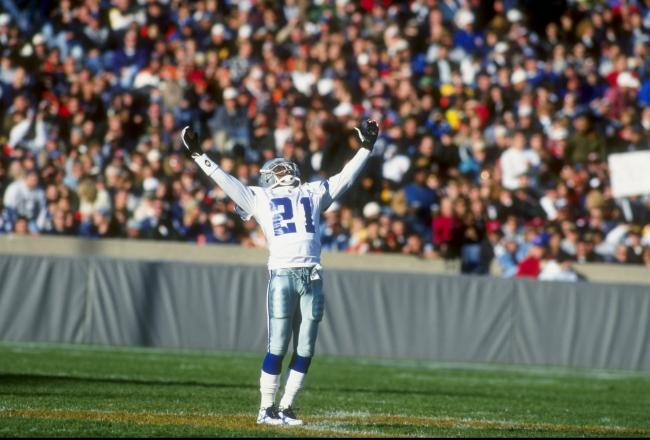Deep in the book Epstein refers in a footnote to a 2011 paper which evaluated football players in the NFL draft according to 9 different tasks (3 are part of the 36.6-m sprint, and 2 are not listed here, bench press, as it is not applied to all players):
- 36.6-m Sprint. The 36.6-m sprint is a test of acceleration and maximum speed. From a 3-point stance, a player runs 36.6 m as fast as he can. Split times are also recorded at 9.1 and 18.3 m. Thus, the 36.6-m sprint test provides 3 separate outcome measures. The 9.1- and 18.3-m split times are measures of acceleration, whereas 36.6-m sprint time is a measure of maximal, or near--maximal, speed. It has previously been suggested that near-maximal speed is achieved by 18.4 m in college American football players (4). Thus, the first 18.3 m of the 36.6-m sprint can be viewed as an acceleration phase, whereas the second half can be viewed as a maximal speed phase.
- Vertical Jump. The vertical jump is a measure of vertical jump ability. Jump height is measured using a device (e.g., Vertec) whereby players jump for maximal height from a standing 2-footed position in a countermovement manner with arm swing. At the peak of the jump, the player reaches as high as possible with a single hand to move horizontal vanes of the Vertec. Vertical jump height is calculated by subtracting the player’s standing-reach height from the height of the highest vane moved.
- Standing Broad Jump. The standing broad jump is a test of horizontal jump ability. Horizontal jump distance is measured. From a standing 2-footed position, with countermovement and arm swing, the player jumps forward for maximal distance. Jump distance is measured as the distance from the start line to the nearest body part landing point (this is typically the point of heel contact).
- 18.3-m Shuttle. The 18.3-m shuttle is a test of change of- direction ability (1). From the starting position, a player runs 4.6 m in 1 direction, quickly changes direction and runs 9.1 m in the opposite direction, and then changes direction again and runs a final 4.6 m in the opposite direction (i.e., the direction in which he initially ran). The test is run in both directions (i.e., left and right) for maximal speed, and the average of the 2 tests is recorded as the score.
- Three-Cone Drill. The player runs around 3 cones placed in the shape of an ‘‘L,’’ with 4.6 m between each cone. From a 3-point stance, the player runs a predetermined route as quickly as possible. This test is also a measure of change of- direction ability (7).
Here are the results:
| Total Points | Average points per task | Overall ranking | |
| Corner Back | 96 | 13.7 | 1.3 |
| Wide receiver | 86 | 12.3 | 2.7 |
| Free Safety | 79 | 11.3 | 3.7 |
| Strong safety | 79 | 11.3 | 3.7 |
| Running Back | 71 | 10.1 | 4.9 |
| Outside Linebacker | 64 | 9.1 | 5.9 |
| Inside Linebacker | 50 | 7.1 | 7.9 |
| Tight end | 45 | 6.4 | 8.6 |
| Fullback | 40 | 5.7 | 9.3 |
| Defensive End | 36 | 5.1 | 9.9 |
| Quarterback | 35 | 5.0 | 10.0 |
| Defensive Tackle | 20 | 2.9 | 12.1 |
| Offensive Tackle | 15 | 2.1 | 12.9 |
| Offensive Guard | 7 | 1.0 | 14.0 |
Corner backs are the best athletes, offensive linemen are the worst. To my surprise, quarterbacks rank just above the linemen, and are among the worst athletes. Enjoy!

0 comments:
Post a Comment